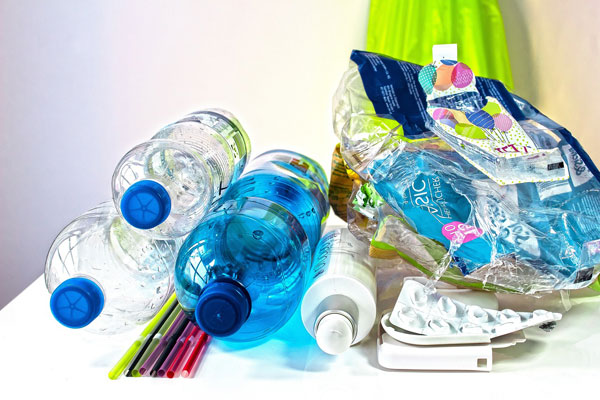A new study suggests microplastics may be entering our brains

[Plastic waste. Photo Credit to Pixabay]
A recent study conducted by the Medical University of Vienna last month suggested the ability of microplastics and nanoplastics in the bloodstream to enter the brain.
Microplastics, also known as MNPs, are defined as particles that fall between 0.001 and 5 millimeters.
This makes the size of MNPs approximately smaller than the width of a human hair strand.
Microplastics are ubiquitous not only around the world and the environment but also within the human body.
They enter the body when humans consume foods and drinks and even through daily inhalation of air.
Microplastics pose potential dangers to the body, as they can penetrate living cells and enter vital membranes.
The study mentioned above researched six mice, half fed with polystyrene–a common type of plastic used to produce food packaging and utensils globally.
The mice’s brains were found to have traces of microplastics just two hours after ingestion–in which the mechanism of the plastic’s penetration was unknown to the researchers.
The microplastics penetrated the brain-blood barrier, which plays a crucial role in preventing the entry of toxins or pathogens that could cause infections in the brain.
This result was a shocking find, considering the vitality of the brain-blood barrier to the brain, along with the short observed period in which the plastic could enter the brain.
Due to the similarities in genetics, anatomy, and physiology between mice and humans, these findings, like other clinical trials, have sparked concern among the research team.
According to Lukas Kenner, who led the research team of this study, “In the brain, plastic particles could increase the risk of inflammation, neurological disorders or even neurodegenerative diseases such as Alzheimer’s or Parkinson’s.”
This finding is significant when considering the omnipresence of plastic in most of the human population’s daily lives, along with the sheer magnitude of microplastics that unknowingly would be entering the bloodstream.
The use of plastic water bottles on an everyday basis can contribute to a large number of microplastics that enter the body–up to 90,000 particles per year.
The number of microplastics entering the body may pose serious risks to daily consumers of these plastic products, especially those unaware of their contribution to neuroinflammation and neurodegenerative diseases.
The study’s findings are just another layer of the ever-growing magnitude of research pointing out the physiological and neurological threat that plastics may pose to the human body.
Kenner emphasizes how crucial it will be to be cautious of the potential and unknown harm microplastics may pose to humans, especially as we await more research to provide insight.
His claim is relevant to the notion that though we are uncertain of the exact neurological effects of microplastics on the brain, it may be best to approach plastic consumption with a more wary eye, especially in a world where it is dominant.
It is evident that without this cautious approach, the expanding demand and use of plastics by the human population may yield more serious health concerns from even more prolonged exposure to plastic.

- Katie Lee / Grade 11
- Episcopal Academy

![THE HERALD STUDENT REPORTERS [US]](/assets/images/logo_student_us.png)
![THE HERALD STUDENT REPORTERS [Canada]](/assets/images/logo_student_ca.png)
